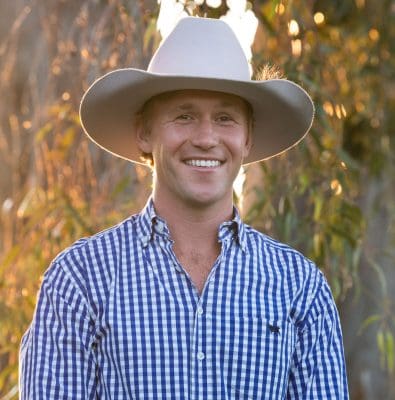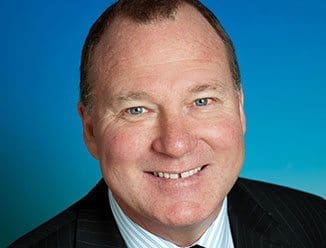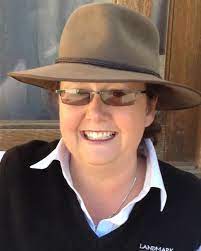The rural property market appears to be changing on a weekly basis. Dominated by an influx of sellers and listings, three rural property specialists share their thoughts about whether now is the opportune time to buy.
Sam Johnston, Johnston Rural Group
Forbes-based rural property specialist Sam Johnston of Johnston Rural Group has noticed an increasing number of people enquiring about selling their assets.
“Typically, spring is the busiest selling period and there has been a notable influx of potential sellers over the past six weeks, giving buyers more choice and opportunity.”
Mr Johnston said after years of growth, the perfect storm appears to be over.
“Farmland sales have hit a turning point as owners brace for dry weather and lower commodity prices, and those who have debated the decision to sell over the past 24 months are now navigating very interesting times.”
Mr Johnston said the confirmation of the El Nino by the Bureau of Meteorology together with record low livestock prices are influencing both selling decisions and buyer activity.
“Some producers are worried about the cost of holding an asset through another dry period, particularly with higher input costs. They are concerned about feeding stock and the associated cash burn on their hands if they commit to going down this path.”
“If we are heading into another drought, like the experts are saying, there is no guarantee it will be over in 12 to 18 months. People are mindful that dry seasonal conditions could continue beyond three or four years,” he said.
Mr Johnston said there are three different profiles carrying out due diligence and considering their options.
Generational farmers – aged between 60 and 70 years of age, some are leaving because it is the end of the line – their children or grandchildren aren’t returning to the family property. Others are considering retirement and whether to sell now or later. They are weighing up whether the cost of holding the asset will outweigh any capital gain moving forward if they decide to ride out the next rural property price cycle.
Those who have held on for too long (in hindsight) – some people have possibly outsmarted themselves by holding on to an asset while trying to pick the top of the market. With rising interest rates and rapidly falling livestock prices, they are now a victim of circumstance and facing a surplus in supply.
Producers with school aged children – parents with children or teenagers who have multiple weekend sporting commitments are keen to continue their core farming business but move closer to a better or bigger rural service centre.
Mr Johnston said the current market appears to be favouring the buyer.
“There is more to choose from and selling periods appear to be blowing out from what was witnessed in the 2020-2022 window.”
Mr Johnston believes in 12 to 18 months’ time, we may all look back on the current period as being a great time to buy.
 “There are plenty of buyers with longer term investment horizons who are looking forward to taking advantage of the low livestock prices and therefore overall acquisition and stocking cost base.”
“There are plenty of buyers with longer term investment horizons who are looking forward to taking advantage of the low livestock prices and therefore overall acquisition and stocking cost base.”
Mr Johnston said he tries to be as realistic as possible with his vendors about the market conditions.
“Dad (principal Gary Johnston) and I always attempt to sit in the buyer’s seat and take a more rounded view. If we believe it is a bad time to sell and not in the best interest of the client, then we advise them to sit it out and wait. We are big believers in being market driven.”
Phil Schell, CBRE Agribusiness
CBRE Agribusiness Adelaide agent Phil Schell said right now, potential vendors are seeking sales advice and asking where the market is heading.
“Producers want to know what is happening, how much did that property make and will their property sell?”
Mr Schell said the South Australian business has never been busier.
“The strength of the enquiry is local farming families with some selling smaller parcels to reduce debt.”
Mr Schell said seasonally, the state received little rain from July through to October.
“It has been one of the driest years on record. Early wheat crops in some districts are unlikely to finish and will come down for hay and many livestock producers are sitting tight waiting for prices to recover before listing.”
Mr Schell said confidence may be easing and enquiry has thinned, but those who are engaging are genuine participants.
“The market has cooled. Instead of having 60 or 70 interested parties, there may be 30 seeking genuine opportunities to buy.”
Mr Schell said high demand will continue for quality holdings and this is evident in the latest listing of Mount Beevor in the Adelaide Hills
“It has already attracted tremendous interest, with interstate groups scheduled to inspect the $25m to $30m property in the coming weeks.”
Mr Schell said the lifestyle component has become a big drawcard.
“While producers can retain their core business, they are also considering services including schools, universities and colleges, as well as succession planning.”
Mr Schell said those vendors selling right now are mostly corporates.
“The majority of CBRE’s appointments are corporate listings. Over the last five to 10 years, they have accrued portfolios or aggregations and witnessed accelerated capital growth, particularly in the livestock and grain sectors.”
“Healthy balance sheets have prompted some to cash in, move on and take their capital elsewhere,” Mr Schell explained.
Ainslie Toole, Nutrien Harcourts
There is an expression that Nutrien Harcourts agent Ainslie Toole believes captures the sentiment for today – “Buy in the dust and sell in the mud”.
Ms Toole said the logic is to buy country when the market offers a more level playing field and sell when it rises.
“By chasing a trend, producers might pay too much for a property and eventually lose over time.”
Ms Toole said as buyer enquiry drops, the current market offers interested parties, particularly livestock producers a real opportunity.
“Now is the ideal time for a smart investor to secure a property and load it up with cheap young heifers.”
“By the time they are ready to breed and animals are on the ground, the livestock market should have turned around, making the purchaser a tidy profit,” she explained.
Ms Toole said most livestock downturns are short lived.
“The present livestock market is predicted to lift because the United States has guaranteed to drop numbers significantly in two years, due to their carbon commitment. This reduction in numbers and supply will naturally lift prices and have a flow on effect here in Australia.”
Ms Toole said genuine buyers are seeking value for money and versatility.
“Most of the country in New South Wales’ central west can be farmed and that duality is a big bonus especially when livestock prices are low.”






HAVE YOUR SAY